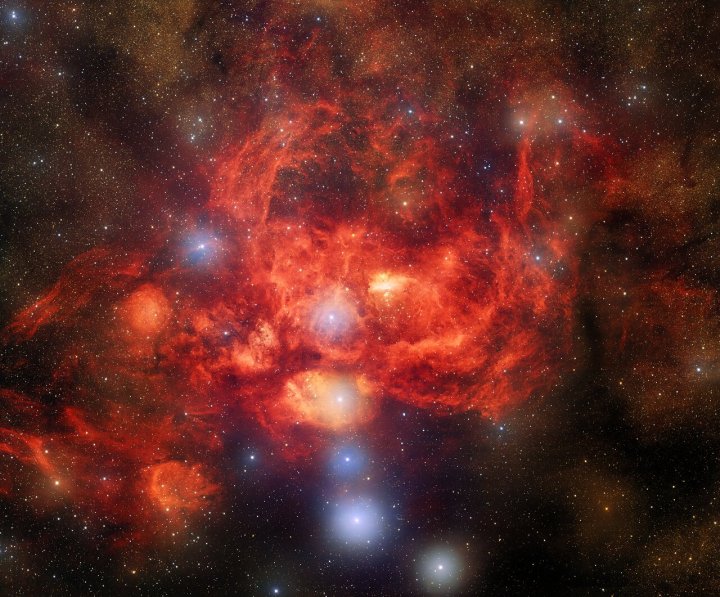One of the biggest mysteries in cosmology today is what exactly the universe is made up of. We know that all of the ordinary matter in the universe makes up just 5% of the total universe, with the rest being made up of theoretical constructs: 27% of the universe is dark matter, and 68% is dark energy. We know that dark matter and dark energy must exist because we see their effects, but neither has ever been measured directly.
So to learn more about dark energy, an international large-scale survey called the Dark Energy Survey was launched to map out hundreds of millions of galaxies. Between 2013 and 2019 a collaboration of researchers used a purpose-built tool called the Dark Energy Camera (DECam) on the Victor M. Blanco Telescope located in the Chilean Andes for these observations. But since the survey has come to an end, the Dark Energy Camera hasn’t been idle — it’s now used for research into a variety of astronomical topics, and it was recently used to capture this stunning image of the Lobster Nebula.

This 400-light-year-wide nebula is located around 8,000 light-years away from Earth in the constellation of Scorpius. This cloud of dust and gas is illuminated by bright, young stars, with a particularly bright set of massive stars in a cluster called Pismis 24 in the heart of the nebula. The interactions of these massive stars, the younger stars forming around them, and the clumps of dust and gas which will eventually form another generation of stars all add to the complex, billowing shape of the nebula.
Capturing these different features was possible thanks to the Dark Energy Camera’s range of filters. “This image was constructed using some of a new range of very special DECam narrowband filters, which isolate very specific wavelengths of light,” NOIRLab explains. “They make it possible to infer the physics of distant objects, including important details about their inner motions, temperatures, and complex chemistry, which is especially important when examining star-forming regions like the Lobster Nebula.”



